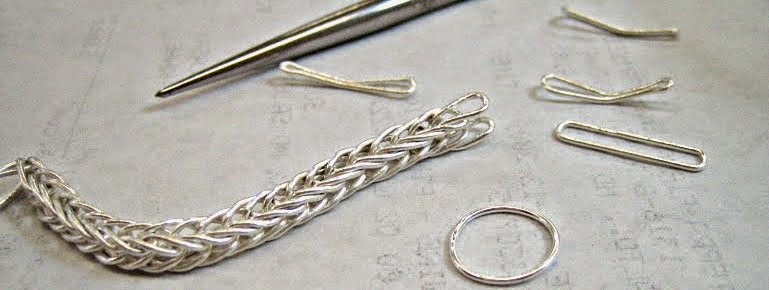Classmates are part of the class experience. The classmates I met over the years have ranged from highly competitive to very helpful and friendly. This was a friendly class, but with less interaction than in some classes. I think it is due to the concentration factor of our subject matter which was discussed in post #6.
This is one of the few in-class photos I took and it was not posed. Monique was sitting across from me and she was trying to get a few links done quickly to finish her neckace. She chose to work on her book to get done fast. Usually, we work on a solid color surface. I thought it would make a great photo and quickly asked permission before taking the "action" shot. We immediately got back to work. Monique later gave permission to post the photos here.
The Classical Loop in Loop book starts out with a bit of history about these types of ancient chains, "The loop-in-loop was the predominant chain type used for gold and silver jewelry from the early Bronze Age in Middle East, through the Classical period until the end of the Middle Ages." The Classical Loop in Loop book can be found at Amazon.com. If you have not explored Amazon in a few years, you need to do so. You can literally browse the pages inside of most books, including this book. Just go to this link and "Click to look inside".Disclosure: This post contains links to an affiliate program, for which I receive a few cents if you make purchases.


![Reblog this post [with Zemanta]](http://img.zemanta.com/reblog_e.png?x-id=bf86d63a-400e-4a16-8125-bf6305df95fa)

![Reblog this post [with Zemanta]](http://img.zemanta.com/reblog_e.png?x-id=75b3460c-40d0-4507-92d9-e850ffc45b96)

![Reblog this post [with Zemanta]](http://img.zemanta.com/reblog_e.png?x-id=76fe5cd9-0d0c-4d32-995f-3678cf883b3f)


